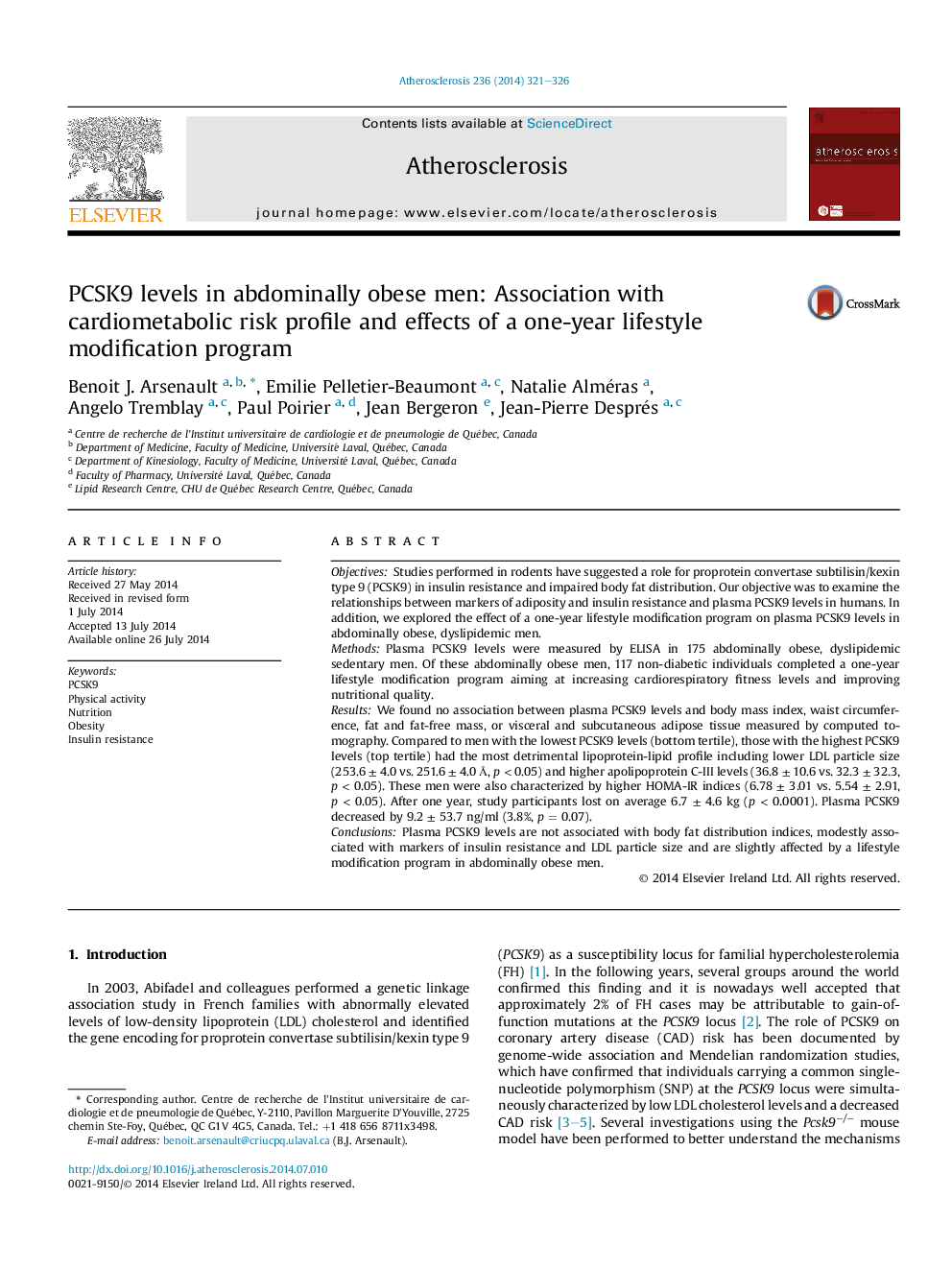| کد مقاله | کد نشریه | سال انتشار | مقاله انگلیسی | نسخه تمام متن |
|---|---|---|---|---|
| 5945623 | 1172353 | 2014 | 6 صفحه PDF | دانلود رایگان |

- PCSK9 levels are associated with markers of glucose-insulin homeostasis in men.
- PCSK9 levels are associated with cholesterol levels in small LDL particles.
- We found no association between PCSK9 levels and cardiorespiratory fitness or body fat distribution.
- A lifestyle modification program had a trivial impact on PCSK9 levels.
ObjectivesStudies performed in rodents have suggested a role for proprotein convertase subtilisin/kexin type 9 (PCSK9) in insulin resistance and impaired body fat distribution. Our objective was to examine the relationships between markers of adiposity and insulin resistance and plasma PCSK9 levels in humans. In addition, we explored the effect of a one-year lifestyle modification program on plasma PCSK9 levels in abdominally obese, dyslipidemic men.MethodsPlasma PCSK9 levels were measured by ELISA in 175 abdominally obese, dyslipidemic sedentary men. Of these abdominally obese men, 117 non-diabetic individuals completed a one-year lifestyle modification program aiming at increasing cardiorespiratory fitness levels and improving nutritional quality.ResultsWe found no association between plasma PCSK9 levels and body mass index, waist circumference, fat and fat-free mass, or visceral and subcutaneous adipose tissue measured by computed tomography. Compared to men with the lowest PCSK9 levels (bottom tertile), those with the highest PCSK9 levels (top tertile) had the most detrimental lipoprotein-lipid profile including lower LDL particle size (253.6 ± 4.0 vs. 251.6 ± 4.0 à , p < 0.05) and higher apolipoprotein C-III levels (36.8 ± 10.6 vs. 32.3 ± 32.3, p < 0.05). These men were also characterized by higher HOMA-IR indices (6.78 ± 3.01 vs. 5.54 ± 2.91, p < 0.05). After one year, study participants lost on average 6.7 ± 4.6 kg (p < 0.0001). Plasma PCSK9 decreased by 9.2 ± 53.7 ng/ml (3.8%, p = 0.07).ConclusionsPlasma PCSK9 levels are not associated with body fat distribution indices, modestly associated with markers of insulin resistance and LDL particle size and are slightly affected by a lifestyle modification program in abdominally obese men.
Journal: Atherosclerosis - Volume 236, Issue 2, October 2014, Pages 321-326